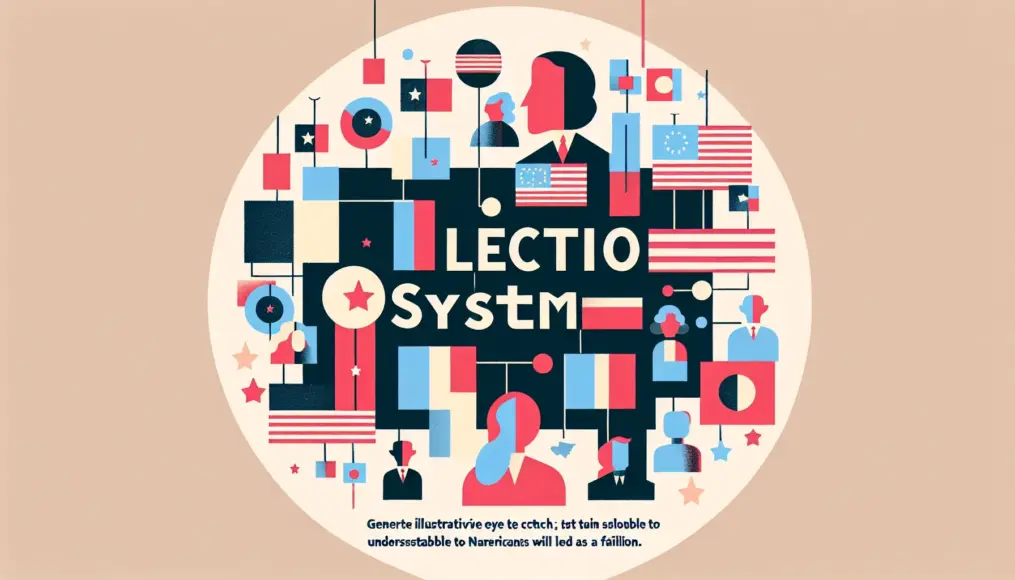The Compulsory Party List Proportional Representation system is gaining attention as a new way to select representatives in elections. But what does this system mean for voters, and how might it impact our democracy? In this article, we’ll delve into the fundamental concepts of this electoral system, its historical background, and the advantages and disadvantages it presents.
Reforming electoral systems is a vital issue in our society, especially as we strive to create mechanisms that allow more people to engage in politics. By understanding this system, we can enhance our interest in upcoming elections and policies. So, let’s explore the truths behind this system and consider the future of democracy together.
- Explanation of the basic concepts of the Compulsory Party List Proportional Representation
- A look back at its historical context in Japan
- An examination of the system’s pros and cons
What is the Compulsory List Proportional Representation System?
The Compulsory List Proportional Representation System is a method for selecting representatives in elections. This system aims to ensure that the results of elections are reflected in the allocation of seats based on the number of votes received by each political party. In other words, it determines how many seats each party wins according to their share of the total votes. In this section, we will take a closer look at the fundamental concepts of this system and how it differs from other forms of representation.
Basic Concept of the System
In the Compulsory List Proportional Representation System, political parties prepare a list of candidates in advance, and seats are distributed according to this list. This means that voters cast their votes for a party rather than for individual candidates. Because seats are allocated based on the election results, minority opinions are more likely to be represented in the legislature. While this system enhances the fairness of elections, it also limits the choices available to voters, as they can only select from the candidates listed by the party.
Differences from Other Representation Systems
The Compulsory List Proportional Representation System has several distinctions when compared to other electoral methods. For example, in a single-member district system, one representative is elected from each district. In contrast, the compulsory list system allows parties to gain seats based on their overall vote share, facilitating a broader representation of diverse opinions. Additionally, there is another form of proportional representation known as the Free List System, where voters can choose individual candidates, providing a different approach compared to the compulsory list method.

If you found this article interesting, you might also like our related piece, “The Full Picture of the Free List Proportional Representation System: Its Impact on Japanese Politics.” This page delves into the history and implications of the Free List Proportional Representation System, helping to deepen your understanding of the topic.
- The Compulsory List Proportional Representation System allows voters to support political parties.
- The allocation of seats based on vote counts ensures diverse opinions are represented.
- Understanding the differences between electoral systems reveals the significance of this system.
Historical Background in Japan
The party-list proportional representation system holds a particularly significant place within Japan’s electoral framework. This system was introduced as part of an effort to better reflect diverse opinions in politics. When we take a look back at Japan’s political history, it becomes clear that various electoral systems have been experimented with over the years. In this section, we’ll explore the introduction of the party-list proportional representation system and its connections to past electoral systems.
Introduction of the System
The party-list proportional representation system was implemented in Japan in 1994. Prior to that, the electoral landscape was dominated by single-member districts and multi-member districts, where voting typically focused on individual candidates. However, these systems often struggled to adequately represent minority viewpoints. To address this issue and incorporate a wider range of opinions into politics, proportional representation was adopted, with the party-list approach specifically selected. This change allowed voters to cast their ballots for entire parties rather than individual candidates, enhancing the diversity within the legislature.
Connection to Past Electoral Systems
Considering the relationship with past electoral systems, the party-list proportional representation has brought about significant changes in Japanese politics. For instance, the older multi-member district system prioritized the selection of local representatives, which often led to local interests taking precedence over national perspectives. In contrast, the party-list system emphasizes party policies and ideologies, enabling a focus on nationwide issues. Through these changes in electoral systems, Japanese politics has gradually evolved.
- The party-list proportional representation system was introduced in 1994.
- Previous systems struggled to reflect minority opinions.
- The differences from past electoral systems have fostered greater political diversity.
The Pros and Cons of Closed-List Proportional Representation
Closed-list proportional representation offers a significant advantage in enhancing the fairness of elections, but it also comes with the downside of limiting voter choice. In this section, we’ll explore the characteristics of this voting system and how it impacts us during elections.
Enhancing Election Fairness
First and foremost, the biggest benefit of closed-list proportional representation is its ability to improve election fairness. In this system, votes cast for a political party are translated into seats based on the overall number of votes received, which means that minority opinions are more likely to be represented in politics. Traditionally, voters tended to select specific candidates, which often led to the views of those with fewer votes being overlooked. However, with closed-list proportional representation, a wider range of opinions can reach the legislature, increasing the likelihood of achieving a more equitable political landscape.
Limiting Voter Choices
On the flip side, closed-list systems come with their own set of drawbacks. One significant limitation is that voters cannot choose individual candidates. Seats are allocated based on a pre-determined list created by the political party, meaning voters are restricted to selecting from the candidates on that list. This can lead to dissatisfaction among voters who have particular candidates they wish to support. Additionally, even if voters are unhappy with a party’s policies or direction, they may hesitate to cast their vote if they cannot choose specific candidates.
- Increased fairness allows for diverse opinions to be represented
- Voters rely on party lists when casting their votes
- Dissatisfaction can arise from the inability to choose specific candidates
Future Prospects and Areas for Improvement
The party-list proportional representation system plays a crucial role in our electoral framework. However, looking ahead, there’s a pressing need for further reforms and increased citizen engagement. In this section, we’ll explore potential improvements and how they could transform our political landscape.
The Need for Electoral Reform
Let’s first consider the necessity for reform. While the party-list proportional representation system does reflect a variety of opinions, its constraints on choices have led to discussions about transitioning to a more flexible system. For example, the introduction of an open-list system or a reevaluation of electoral districts are potential changes on the table. If voters can select candidates they genuinely support, it could spark greater interest in politics. Electoral reform is a vital step toward building a stronger democracy.
Promoting Citizen Engagement
Next, let’s focus on promoting citizen participation. Many voices today express concern about a growing apathy towards politics. It’s crucial to encourage citizens to form their own opinions and actively engage in politics through education and awareness initiatives. By increasing opportunities for participation—such as community discussions and online forums—more individuals may develop an interest in political matters, thus further strengthening democracy.
- Discussions are underway for introducing a more flexible electoral system through reforms.
- Enabling voters to select candidates could increase interest in politics.
- Education and community activities are essential for promoting citizen engagement.
Summary
The proportional representation system with a fixed party list plays a crucial role in Japan’s electoral framework. This system is designed to reflect the diverse viewpoints of voters in politics, enhancing the fairness of elections. However, it’s important to recognize that it also comes with some limitations in terms of choices available to voters. Looking ahead, there is a growing call for further reforms and increased civic participation, which are expected to lead to a stronger democracy.
Each of us has a part to play in engaging with politics and participating actively, which is the first step toward creating a better future for our society. It’s essential to deepen our understanding of political issues and to maintain our own opinions. We’d love to hear your thoughts and perspectives!
- The fixed party list system reflects diverse opinions.
- Reform is expected to expand voter choices.
- Increased civic participation can lead to a better democracy.
We look forward to hearing your opinions and feedback. Please share your thoughts in the comments section!



Comment